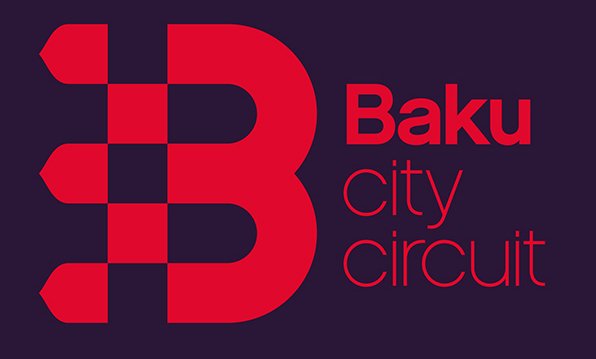-
Address:Chukhur Gabala village road, Gabala, AZ3613
Ancient GabalaGabala was the first capital city of Albania; it played an important role in the economical, political and cultural life of the country since IV century BC; it was mentioned in written sources starting from the first century of our era.Approximately 2500 years old ancient Gabala town which had been capital city of Caucasian Albania for nine centuries was one of political-economical and trading centers of the world and could be compared with such ancient and fame cities as Babil, Troy and Pompey. Reminders of big buildings, castle walls and monuments of material culture prove Gabala being a grandiose ancient city. Ancient Gabala occurred as a city at the end of IV– beginning of III century BC and lived till the middle of XVIII century. Gabala lost its previous grandeur and importance in the middle of XVIII century; the population gradually moved from here. Ruins of the ancient city are in 15-20 km distance from the region center, on a territory between Gara River and Covurlu River, in Chukhur Gabala village. Ancient Gabala territory was 25 hectares. There was head residence of Albanian rulers located. Roman army attacked Albania in 60th years BC and could not occupy Gabala. Roman author Great Plini (I century) would call Gabala “Kabalaka”, Greek geographer Ptolemey (II century) – “Khabala”, Arabic historian Balazuri (IX century) – “Khezer”.Gabala town consists of three basic parts known as Gala, Selbir and Chaqqalli. In the result of investigations taken place in the area which is known as Chaqqalli (there are 50 hectares of the territory) which is located between Garachay River and Qocalan River; it was proved that there had been an intensive city life from IV century BC till the end of I century AC. A few meters thick rich civilized layer had been determined in the part of the city called Selbir (the approximate territory is 13 hectares) related to I-X centuries; in the Gala part (there are approximately 12 hectares of the territory) – related to I-XVII centuries. Apparently, after Selbir city life was ceased, in Selbir and Gala life had begun. But starting from the X century, life in Gala continued only. The most grandiose constructions found in Gala and Selbir parts of the city, including city walls and towers that kept its grandeur up to this day, were constructed in V century. Gabala’s grandiose castle walls differ from the defense system of the other Middle Age cities of Azerbaijan. The walls of Selbir have been constructed from air-brick and polished river stone what is especially characteristic for the architecture of Sasanid period. Semicircus form tower have been built from clay mud and the mixture of air-brick and chaff. Diameter of the inside part of the tower is 3 meters. Air-brick mask had been applied to the outside tower and walls. There are remainders of supporting inside wall built with river stone, burnt brick and white-lime solution. According to the investigators’ opinion, this 6 ms length wall has been built after the walls with the restoration purpose. There is one more right-angled form tower with 14 ms height. It had been built with white-lime and polished river stone, and tuff stone mask had been applied later. In opinion of the specialists, this tower built in I century BC has served as a reliable defense system of the city for centuries. Remainders of a 35 ms height, 1 meter thick and 2.4 ms length wall have been found in the north side from this above mentioned tower. This wall has been constructed from polished tuff stone and white-lime. The defense walls of the castle part attract the attention with its grand. South walls which have kept its primary appearance up to this day are especially magnificent. The main door is located on the south. It is possible to say that giant towers had been built in right and left side of the castle door remained safe. The walls’ foundation had been constructed with big polished tuff stones in four-cornered form and the upper part was constructed with different sized burnt bricks. There were 15 kinds of bricks used in the construction that differ in size. It is interesting that the masters skillfully used different sized bricks in the construction and created a rare architecture example. Four towers remained in the south wall of the Castle. They all are in semi circus form. The castle tower wall’s height is 10-14 ms, diameter of walls is 6-8 ms, thickness is approximately 4 meters; towers’ walls have been constructed with about 70 rows of brick.Gabala used to be a very important handicraft centre in ancient times and in the Middle Ages. Great number of material and cultural examples testifies about wide development of handicrafts of stone, metal, bone, wood, pottery, production of glass, jeweler’s art, dye profession, tanning, knitting and a number of other areas in the time of archaeological excavations. It seems, Gabala supplied the needs of the region centre and surrounding areas. Coins, faience, porcelain and celadon plates and dishes that were found in the investigations time testify about wide trade contacts with a number of countries of the world, including Iran and China in XVI-XVII centuries. All of these testify that the reason of capital moving to Barda is not Gabala’s loosing the functions of the main city of the country. Then, why did capital move from the main city to Barda settlement located in the lowland territory? We think the reasons are Mehrani’s coming, military and political strengthening of Girdman area and its independence from Iran Sasanid.
http://www.anl.az/down/meqale/xalqqazeti/xalqqazeti_yanvar2009/66781.htm
http://www.mct.gov.az/?/az/cities/view/340/
http://www.ayna.az/2009-08-22/culture/539-Ilyas-Babaev-arkhelogiya



.png?v=DqKtbngFu8-eBM77oNP77E2SV2gNF4_tUk0Y9IcK12s)

















